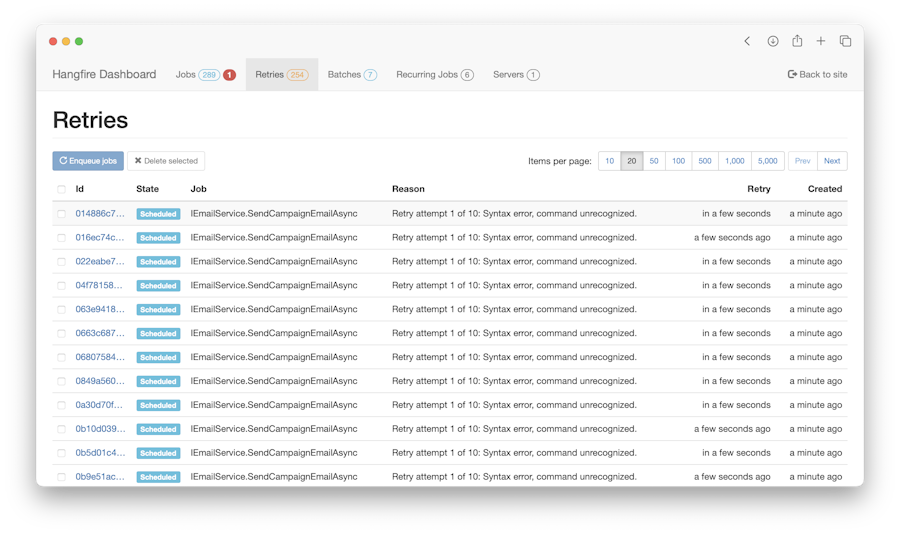

Jobs, with their parameters, are dropped, often irrecoverably. If your redis starts failing (been there, it hurts), e.g. Commonly, people store stuff in redis that can be re-built from database or some eventlog or so.īut not sidekiq. Mostly by design: redis is not meant to be the primary, one and only store of truth. Leading to (been there, it hurt) potentially missing jobs or queuing jobs that have no associated mutation in the db.įurthermore, a big downside of redis is that it's promise of consistency is low. Jobs in your queue in the database can be committed in the same transaction that makes the mutation.

# package installation $ zammad run rails r '' Running several commands in a shell ¶ The following command will provide you a rails console, you can run several commands inside it.I agree with most of the findings in that article, but I miss one very important one: consistency. Picking your queuing backend becomes more of an operational concern, then.

We can then have framework features and other gems build on top of that, without having to worry about API differences between various job runners such as Delayed Job and Resque. The main point is to ensure that all Rails apps will have a job infrastructure in place. Instead we recommend a Redis based queuing library such as Sidekiq Delayed Job, also known as DJ, makes it easy to add background tasks to your Rails applications on Heroku. You can use Delayed Job 2.1 or later on Heroku We recommend not using delayed job for most applications due to the extra load generated on the database. red_star = Team.find_by_name("Red Star") TeamsStatisticJob.perform_later(red_star) Because Delayed Job is database based queue system, previous command will insert one row in the delayed_jobs table. Let’s enqueue a job through Rails console. If you plan to use delayed_job with Active Record, add delayed_job_active_record to your Gemfile. If it IS running, there's a button to cancel it.ĭelayed_job supports multiple backends for storing the job queue. User in the ui can see if a job is running(if there's a started_at and no finished_at). The execute function creates a Thread, so each job has its own thread. If it is, it adds itself to the delayed job queue. When a job is created, it checks if its supposed to run immediately. Search thousands of jobs on neuvoo, the largest job site worldwide. red_star = Team.find_by_name ("Red Star") TeamsStatisticJob.perform_later (red_star) Because Delayed Job is database based queue system, previous command will insert one row in the delayed_jobs table. You should change it to a before_save so you don't enter an infinite loop of saving. A job for StructJob is reported as StructJob#perform.ĭelayed::Job.enqueue should return a Delayed::Job record, so you can grab the ID off of that and save it back onto the Radar record (create a field for it on radar document) so you can find it again later easily. AppSignal will use the object's class name as the action naming, appending #perform to the action name. When a worker dequeues a job, it will pick the one with the lowest number in its priority column.ĭelayed Job supports enqueuing jobs based on instances of classes or structs that listen to a perform instance method, when enqueued with Delayed::Job.enqueue.

Delayed Job provides a mechanism to change the order in which jobs are run: a job can have an integer "priority", which provides perhaps the most obvious mechanism for beginning to introduce more fairness into the system.


 0 kommentar(er)
0 kommentar(er)
